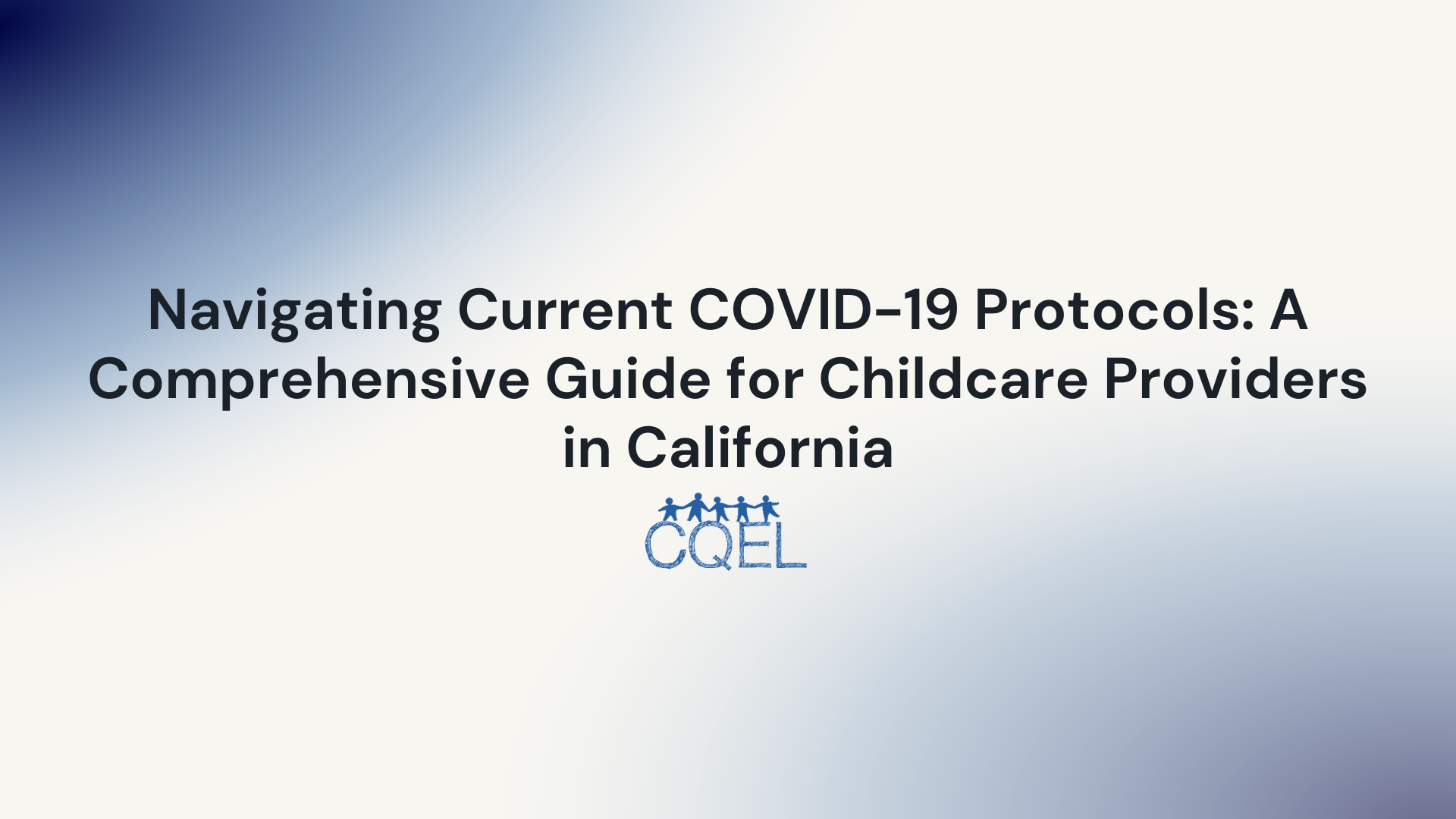Navigating Current COVID-19 Protocols: A Comprehensive Guide for Childcare Providers in California
As childcare providers, you play a crucial role in maintaining safety and health standards while continuing to offer essential services.

The COVID-19 pandemic has significantly reshaped our world, imposing new challenges and expectations in various sectors, including childcare. As childcare providers, you play a crucial role in maintaining safety and health standards while continuing to offer essential services. This post will provide a comprehensive overview of the key topics that childcare providers in California need to know about COVID-19 protocols.
1. Understanding the State and Local Health Orders
Childcare providers in California need to stay updated on state and local health orders, which may change in response to shifting COVID-19 trends. These orders may include restrictions on group sizes, requirements for masks and social distancing, and guidelines for sanitization. California Department of Public Health provides regular updates and comprehensive guidance.
2. Implementing Regular Health Checks
Routine health checks, including temperature checks and symptom screening for staff, children, and any visitors, are an essential component of COVID-19 prevention. Your center should establish clear procedures for conducting these checks and responding to any potential health concerns. The CDC's guidance on health screenings is a valuable resource.
3. Maintaining Sanitation and Hygiene Practices
Hygiene practices such as regular handwashing, cleaning, and disinfecting surfaces are critical for reducing the spread of the virus. The Environmental Protection Agency provides a list of approved disinfectants to use against COVID-19.
4. Managing COVID-19 Cases in the Childcare Setting
There must be protocols in place to manage the identification of COVID-19 cases within the childcare setting, isolation procedures, and contact tracing. The California Department of Public Health's guidance on managing outbreaks in childcare facilities is a key resource.
5. Implementing and Enforcing Mask Policies
Understanding when and how to implement mask policies is crucial. Factors such as the children's age and ability, local transmission rates, and physical setting may impact these policies. The American Academy of Pediatrics offers valuable insights.
6. Modifying Activities to Promote Social Distancing
Childcare providers need to modify their activities to minimize close contact among children. This may involve restructuring spaces, limiting group sizes, and changing certain activities. CDC's guide provides strategies for maintaining healthy environments.
7. Supporting Remote Learning
In some cases, supporting remote learning might be necessary, particularly for school-age children. Familiarize yourself with best practices and resources for facilitating effective remote learning experiences. California Department of Education provides various resources for distance learning.
8. Communicating with Parents and Families
Open, frequent communication with families about your center's COVID-19 protocols is key. This can involve regular updates on health and safety measures, changes to daily routines, and the center's plans for responding to potential COVID-19 cases. The National Association for the Education of Young Children has more on this topic.
9. Protecting Staff Health and Well-being
In addition to protecting the children in your care, it's vital to prioritize the health and well-being of your staff. This includes providing appropriate personal protective equipment (PPE), encouraging staff to stay home when they're sick, and providing mental health support. OSHA's Guidance on Preparing Workplaces for COVID-19 is a helpful resource.
Navigating the New Normal with Care and Diligence
The COVID-19 pandemic has brought new challenges for childcare providers, but it's also underscored the sector's vital role in supporting families and communities. By staying informed, adopting best practices, and prioritizing health and safety, you can help navigate these challenging times with resilience and care.
